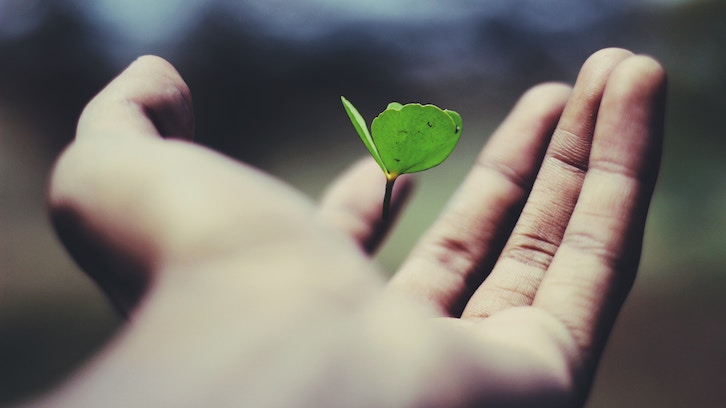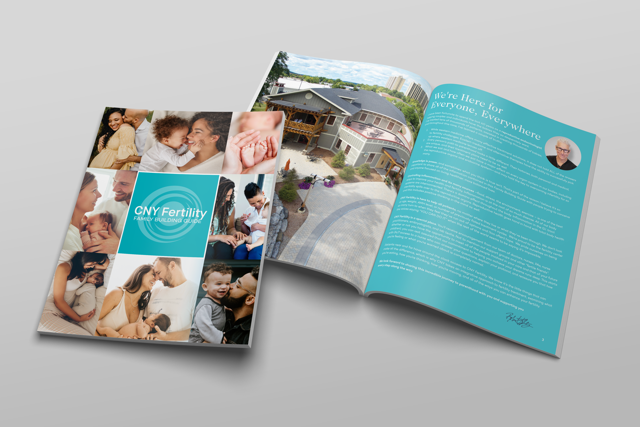Choosing to be an Embryo Donor: The Gift of Life

IVF is a big deal: the surgery, the shots, the embryos, the transfer. Not one part of it is simple. Between the physical toll on your body and the wide range of emotions, IVF affects every part of your life. That story’s been told many times. But what about after IVF? What about those unused embryos? That’s the story I’m going to tell today.
It wasn’t a surprise that our infertility journey ended with IVF. My husband, Chuck, and I tried to conceive naturally for three years before we sought fertility treatments. In July of 2015, after two fertility centers and too many negative pregnancy tests, I was facing surgery on my reproductive system to make sure I didn’t have Endometriosis. Dr. Kiltz also did Ovarian Drilling (not as scary as it sounds). After that, I insisted on one more round of IUI, my way of holding on to hope that we wouldn’t have to do IVF.
The IUI cycle was typical for us: great follicles, excellent sperm, negative pregnancy test. We got the call that gave us the news while we were at the New York State Fair. I knew what was next; we’d already agreed that we would do IVF if this IUI failed. I’m grateful we made that decision before the phone call because it made it much easier emotionally to move forward.
The nurses had been hinting that we should do IVF for months. Chuck had agreed with them. He was sure that was our route to a pregnancy. I, on the other hand, wanted to avoid it. Why? Because I struggled with the fact that we would probably have embryos that we wouldn’t use. To me, an embryo is a life. Although I’m Catholic, it wasn’t really a religious thing. It was more like after trying for so long, I couldn’t imagine disposing of our embryos or giving them to someone else.
With all those reservations, what made me agree to IVF? Two things. The first was how sure Chuck was that it was the right move. He’d been so patient and so encouraging through our whole journey, and I knew he wouldn’t support IVF if he didn’t truly believe it was the right decision. The second was the uncertainty of IVF. Like all fertility treatments, there was no guarantee that we would conceive a baby. I didn’t know that we would have extra embryos, so there was really no reason to stress about them. One of my favorite mantras is don’t stress about things you can’t change. I couldn’t control how many embryos we would have and how many would become viable pregnancies; once I got into that mentality, it was easier to say “yes” to IVF.
Once the decision was made, the cycle felt like it flew by. Dr. Kiltz was able to extract 27 eggs, which became ten viable embryos. The news was so exciting! Ten chances for a child; it was a dream come true. The fact that we would have to deal with extra embryos—if there were any—was driven from my mind. A baby seemed closer than it ever had been before. We transferred two five-day embryos and conceived our little Chase.
Around Chase’s first birthday, the inevitable happened: we started to talk about baby number two. It was such an odd feeling. We’d dreamed and hoped for baby number one for so long that I’d never let myself really consider having multiple children. Now we had eight embryos waiting to be used.
Almost exactly two years after our transfer for Chase, we transferred two frozen embryos. When I got the call about our pregnancy test, the nurse told me my HCG levels were very high. I joked that “there may be two in there.”
Before our twin boys were born, we started talking about what to do with our six remaining embryos. We’d always wanted two or three children, so we knew we wouldn’t use them ourselves. Since Chuck and I think of our embryos as living beings, discarding or donating to research were not viable options for us. Both were outside of our comfort zone, which, of course, was my fear when we decided to do IVF. Realistically, we couldn’t pay to store our embryos forever, but I also hated the options in front of us.
At some point, I read an article about embryo adoption. It was written from the perspective of the people who adopted the embryos, and their gratitude and joy was beautiful to experience. It got me thinking: if we could help a couple like that, why wouldn’t we? The thought stayed in my mind, swimming around the reality that someone else would be raising our biological child.
I was also nervous about what Chuck would say. How would he feel about another couple using our embryos? It’s a huge thought, one almost too big to wrap your head around. Needless to say, I was pretty nervous when I broached the subject one day when we were driving somewhere.
Chuck’s response sank deep into my heart. Without hesitation, he said he wanted to donate the embryos because he wanted to give them the chance to live, and that was the only way they would get it. His answer was the key to me making my half of the decision. If I wanted our embryos to have a shot at life, I needed to give them to someone else. CNY does embryo donation, not adoption, and that had become the clear choice for us.
After we decided on embryo donation, the reality of actually signing the papers seemed too far away to fathom. In the fertility treatment world, pregnancy loss is always at the back of your mind, so we decided to wait to move forward with donating until our twins were born. I was blessed with an easy pregnancy and gave birth via c-section to our boys at 38 weeks. A couple months after their arrival, I realized we needed to take care of our embryos. Our storage fee was due soon, and I wanted to donate them before that.

I talked to a few people about what Chuck and I wanted to do, and the response was usually, that’s wonderful but what if you see a child someday that looks like yours? Initially, I thought I could never reconcile that. But I just kept going back to what I had become my mantra: they need a chance to live. At some point, it clicked. This was the right decision.
I finally made the phone call when the twins were 2½ months to CNY about donating our embryos. They sent us the paperwork, but I wanted to meet with someone in person. Luckily for me, I got to pick which doctor we sat down with, and, of course, I chose Dr. Kiltz, the man who I credit for the conception of our three boys.
By the time we met with Dr. Kiltz, I had a list of questions. Does CNY charge the people who use the embryos? How do they decide who gets them? Do they all go to the same person? Would the couple know who gave them the embryos? I couldn’t sign that paperwork until I got the answers.
We took our boys to CNY for the meeting. It’s so much fun to see the nurse’s faces when they see fertility treatment babies. We spent over an hour in the office that day, and we were never without a smiling face talking to us about our precious children.’
Dr. Kiltz, as expected, came into the room like a whirlwind. The first thing he asked was if we had a couple in mind for our donation. I was taken aback; I’d never known anyone who needed embryos. When we answered no, we discussed if our donation would be anonymous. We chose anonymous with a note that, if the recipients wanted to contact us, the fertility center could ask us if we wanted to connect with them.
Dr. Kiltz answered the rest of my questions in a few short minutes. Namely how CNY doesn’t charge the recipients for the embryos, only the procedures needed to implant them and that the embryos could go to more than one couple.
What struck me the most was when he said most people discard their embryos or store them indefinitely, which is why there is a waiting list for embryos. That blew my mind. I’d assumed, for some reason, that needing embryos was rare. With just a little effort on our part, Chuck and I would be helping a couple—or couples—experience the joy that we’d so desperately wanted for years: holding our baby in our arms.
By the time Dr. Kiltz left the room, the last puzzle pieces had clicked into place. I was 100% positive we were making the right decision. We did the bloodwork and urine samples and signed the custody of our embryos over that day. A week later, I sent in the medical questionnaires.
Then, in an odd parallel to the two-week wait, we waited to see if our embryos were accepted. I was nervous—what if something on the medical questionnaires was a red flag? What if they say no? What will we do then? There was no plan B.
As the weeks passed, I couldn’t get the medical questionnaires out of my thoughts. They had been simple to fill out. We laughed over some of the questions while I read them to Chuck, and he answered while doing the dishes. Chuck and I are both fairly healthy, so I wasn’t concerned about that. However, a few of our relatives have medical conditions, one of which is pretty rare. I couldn’t imagine a couple saying no to our embryos because of it, but I didn’t know what the fertility center would do.
I’m a worrier, so I could never quite push the doubt from my mind. I tried to focus on the fact that three of the four embryos we had used had become little boys. How could a long waiting list not want those odds?
Today, I found out that everything has been finalized. It’s an odd feeling, knowing that we no longer have the option of using those embryos to have children. That said, it’s a feeling that I’m content with. Occasionally, my mind goes back to the question people have asked me. What will happen if I’m walking through the mall, and I see a little boy that resembles my sons or a little girl that looks a bit like me? Will I wonder? I don’t know. But, if I truly need to take a second or third look, at least I will know that I gave that child, if it is one of my embryos, a chance to walk, talk, and laugh. The most important thing is that Chuck and I did something that very few people have the privilege of doing: we gave another couple a chance—maybe six chances—to have a child.
By Ashley Hurd
